SAP Payroll
Filter By
Browse By
- SAP Analytics and AI
- SAP Application Development and Integration
- All SAP Application Development and Integration
- SAP ABAP
- SAP ABAP Development Tools
- SAP ABAP Test Cockpit
- SAP API Management
- SAP BAPI
- SAP Basis
- SAP BRF
- SAP Business Application Studio
- SAP CMS
- SAP Design Studio
- SAP Development Tools
- SAP DevOps
- SAP EAI
- SAP EDI
- SAP Extension Suite
- SAP Fiori
- SAP Fiori Elements
- SAP Integration Suite
- SAP Low Code Application Development
- SAP Low Code Automation
- SAP Netweaver
- SAP Release Management
- SAP UI5
- SAP Web Application Server
- SAP Web IDE
- SAP Business Process Management
- SAP Center of Excellence
- SAP CIO
- SAP Customer Experience
- SAP Data and Data Management
- All SAP Data and Data Management
- SAP BW
- SAP BW/4HANA
- SAP Crystal Reporting
- SAP Data Archiving
- SAP Data Center
- SAP Data Governance
- SAP Data Integration
- SAP Data Migration
- SAP Data Quality
- SAP Data Services
- SAP Data Strategy
- SAP Data Visualization
- SAP Data Warehouse Cloud
- SAP DMS
- SAP Document Control
- SAP EIM
- SAP ETL
- SAP ETL Tools
- SAP HANA
- SAP HANA Administration
- SAP HANA Deployment Infrastructure
- SAP HANA Studio
- SAP Master Data
- SAP Master Data Governance
- SAP MDM
- SAP Enterprise Architect
- SAP Enterprise Asset Management
- SAP ERP
- SAP Finance
- All SAP Finance
- SAP Accounting
- SAP AR AP
- SAP Asset Accounting
- SAP Billing Systems
- SAP BPC
- SAP BRIM
- SAP Cash Management
- SAP Central Finance
- SAP Controlling
- SAP COPA
- SAP Cost Center Accounting
- SAP e-invoicing
- SAP FICO
- SAP Finance Automation
- SAP Financial Closing Cockpit
- SAP Financial Consolidation
- SAP Financial Planning
- SAP FX Risk
- SAP General Ledger
- SAP Global Tax Management
- SAP Hyperion
- SAP Order to Cash
- SAP Payment Processing
- SAP Profitability Analysis
- SAP Rebate Management
- SAP S/4HANA Finance
- SAP Universal Journal
- SAP Governance Risk and Compliance
- SAP Human Capital Management
- SAP Intelligent Technologies
- SAP Platform and Technology
- All SAP Platform and Technology
- SAP Business Technology Platform
- SAP Cloud Connector
- SAP Cloud Integration Platform
- SAP Cloud Migration
- SAP Cloud Platform
- SAP Cloud Providers
- SAP Cloud Strategy
- SAP Container Platform
- SAP Digital Asset Management
- SAP Digital Integration Hub
- SAP Digital Signature
- SAP HANA Enterprise Cloud
- SAP HEC
- SAP Hyperscalers
- SAP Infrastructure
- SAP Messaging
- SAP Smart Forms
- SAP Quality and Testing
- SAP Security
- SAP Spend Management
- SAP Supply Chain Management
- All SAP Supply Chain Management
- SAP APO
- SAP Asset Management
- SAP Business Network
- SAP Digital Manufacturing Cloud
- SAP Digital Twin
- SAP EWM
- SAP IBP
- SAP Inventory Management
- SAP Label Printing
- SAP Logistics
- SAP Manufacturing
- SAP Manufacturing Automation
- SAP MES
- SAP MII
- SAP MM
- SAP MRO
- SAP MRP
- SAP Order Management
- SAP Plant Maintenance
- SAP PLM
- SAP Production Planning
- SAP S&OP
- SAP SD
- SAP SPM
- SAP Supply Chain Planning
- SAP Track and Trace
- SAP Transportation Management
- SAP System Administration
What Is SAP Payroll?
Payroll is such a vital component to employee satisfaction that many companies are hesitant to make any changes — even if there are potential benefits to updating processes or technologies. This is reflected in SAP Payroll offerings — the traditional on-premise SAP Payroll and the cloud-based SAP SuccessFactors Employee Central Payroll. The cloud offering is essentially identical to the on-premise offering, except for where the servers are hosted.
SAP has hinted at plans to build a next-generation payroll solution, but that often takes a backseat to investments in other areas of its human resources (HR) technology suite.
Making an error on an employee’s paycheck is one of the fastest ways to receive a notice of resignation, so the reticence to change payroll at many companies, and the motivation for SAP to build a new payroll system, is explainable.
What Is SAP Payroll?
Payroll is such a vital component to employee satisfaction that many companies are hesitant to make any changes — even if there are potential benefits to updating processes or technologies. This is reflected in SAP Payroll offerings — the traditional on-premise SAP Payroll and the cloud-based SAP SuccessFactors Employee Central Payroll. The cloud offering is essentially identical to the on-premise offering, except for where the servers are hosted.
SAP has hinted at plans to build a next-generation payroll solution, but that often takes a backseat to investments in other areas of its human resources (HR) technology suite.
Making an error on an employee’s paycheck is one of the fastest ways to receive a notice of resignation, so the reticence to change payroll at many companies, and the motivation for SAP to build a new payroll system, is explainable.
Vendors such as Deloitte offer SAP Payroll and SAP SuccessFactors Employee Central Payroll implementation and consulting services. There are companies, such as Alight, that also administer payroll services for an organization partially or completely with the option to use technologies like SAP Employee Central Payroll.
Many SAP customers also use non-SAP payroll systems that integrate with SAP systems such as ADP or Paychex.
Key SAP Payroll Considerations for SAPinsiders
- Mainstream maintenance for on-premise SAP Payroll is scheduled to end in 2027. Current SAP Payroll customers will have to consider the option of moving to SAP SuccessFactors Employee Central Payroll in the cloud, which currently has no end-of-maintenance date, or a non-SAP payroll product. Staying with on-premise SAP Payroll beyond 2027 will require extra maintenance fees or third-party maintenance services.
- Payroll has slower cloud adoption than other HR technologies. In our recent HR Technology State of the Market report, among surveyed respondents that indicated they were using payroll technology, 18% indicated that the system was currently deployed in the cloud, the lowest cloud adoption rate of any technology mentioned. Cloud payroll adoption is rising, with another 19% currently implementing a cloud payroll solution. However, nearly 11% of respondents indicated having no plans for payroll in the cloud, more than double the proportion of any other technology.
- Payroll accuracy is a top HR objective. In the same HR Technology State of the Market report mentioned above, reducing errors in time and payroll was the top HR technology strategy objective among respondents, which were predominantly HR professionals. Getting payroll right isn’t just a concern for the finance and compliance departments. Those in HR know the importance it holds to their ability to retain talent.
469 results
-

 Premium
Premium
Correctly Clear Claims in SAPs US Payroll Part 1
Reading time: 16 mins
If your company uses SAP’s US Payroll, then you should be aware of the claims processing procedure. Learn how to clear claims via a basic example. Key Concept A claim is an amount of money that an employee owes the company. It is a receivable created from some sort of payroll activity. Of all the…...…
-

 Premium
Premium
Ease Reporting On Payroll Results With Dedicated Payroll Infotypes
Reading time: 12 mins
Set up standard Payroll infotypes to read payroll results without extensive programming or third-party products. In five steps you can extract the payroll results to infotypes. Then display the results, using standard transaction codes, or add them to a custom InfoSet for the creation of flexible queries. Key Concept Payroll infotypes are standard infotypes that…...…
-

 Premium
Premium
Customize Loan Wage Types and Create User-Friendly Payslips
Reading time: 15 mins
Learn a simple and straightforward approach for configuring company-specific loan wage types, mapping them to system-specific loan wage types, and displaying them in payslips. Key Concept Many companies need to have custom wage types created for company-specific loans that are offered to employees. Some examples of loan types include home loans, car loans, marriage loans…...…
-
-

 Premium
Premium
Learn How to Retrieve Action Types and Action Reasons for a Subsequent Payroll Period Using PCRs
Reading time: 9 mins
Learn how to use personnel calculation rules to retrieve action types and action reasons for the first day of the subsequent payroll period, even when they’re not available in the work center basic pay table while you process payroll. See how you can retrieve the values of action types and action reasons when an employee’s…...…
-

- SAP Payroll
 Premium
Premium
5 Steps to Set Up SAP HCM Configuration for Imputed Income Calculation
Reading time: 11 mins
Understand how standard SAP configuration can be implemented and tested for imputed income calculation. This guide explains the key configuration steps required to set up the imputed income calculation related to configuration and validation in the payroll results table. Key Concept Section 79 of the US Internal Revenue Code (IRC) requires employers to calculate taxable…...…
-

 Premium
Premium
Access Loan Data with Ease
Reading time: 18 mins
Reading the balance for loans kept in infotype 0045 may be confusing for developers and consultants. This is because loan balances are not stored in the same manner as other fields of infotype 0045. Learn about the loan data storage architecture and the code used to access loan balances to clear up the confusion and…...…
-

Live from SAPinsider Studio: SAP Payroll Q&A from HR 2017
Mike Timm of Integrated Consulting Group and Marty Schmoker of United Launch Alliance visit with SAPinsider Studio at the HR 2017 event in Orlando, Florida, to discuss questions posed by attendees of the SAP Payroll Q&A session at the conference. Timm and Schmoker served as session moderators. Topics of this discussion include: The level of…...…
-
-

Enhance the Payroll Experience
Reading time: 5 mins
The payroll function has always been associated with transactional processing and manual reconciliation, executing various programs and reports, and spending countless hours performing data validations and reconciliation in spreadsheets. This process can be laborious for payroll administrators and is prone to human error. Cloud-based integrated HR technologies can lead to more purposeful audits and a…
-

 Premium
Premium
Understanding and Managing Payroll Retrocalculations
Reading time: 41 mins
One of the most complicated aspects of R/3’s Payroll functionality is the concept of retrocalculations. It’s complex, no getting around that. However, if you understand the basics, you can use that knowledge to figure out what happened to cause the retrocalculation, and what the retrocalculation changed. One of the most complicated aspects of R/3’s Payroll…...…
-

- SAP Payroll
 Premium
Premium
Learn How to Process Wage Types in Personnel Calculation Rules Based on Payroll Periods
Reading time: 9 mins
You can use personnel calculation rules (PCRs) for automatic calculation of employee payments or deductions when the calculation rule for the wage type depends on the payroll period. See how you can call a payroll period in a PCR to process a wage type for a particular payroll period during a payroll run. You can…...…
Featured Insiders
-

Gaurav Pandey
Principal SAP Architect, Amgen
-

Suitao Yang
Senior Consultant, Deloitte
-

Cameron Amling
Finance, Procurement, Safety, Risk, HR and Payroll
General Manager Technology Corporate, Liquor and Emerging Businesses at Coles
Become a Member
Unlimited access to thousands of resources for SAP-specific expertise that can only be found here.
Upcoming Events
Related Vendors
Your request has been successfully sent


